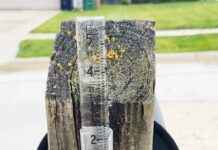Efforts to Address Chronic Absenteeism in Iowa Schools
Iowa school districts are facing a critical issue of chronic absenteeism, especially in the wake of the COVID-19 pandemic. Many schools are ramping up their efforts to tackle this issue head-on, recognizing the long-term impact it can have on students’ academic success.
Des Moines Public Schools, under the leadership of Superintendent Ian Roberts, has taken proactive steps to improve attendance rates. The district has implemented various outreach strategies, including sending letters, making phone calls, and conducting in-person visits to students’ homes. These efforts have shed light on the underlying reasons for absenteeism among students.
Challenges Faced by Students
Superintendent Roberts has revealed that some students are missing school to take care of family members or to work and contribute to their family’s income. He acknowledges the sacrifices these young individuals are making and the delicate balance they are trying to maintain between attending school and supporting their families.
Proposed Changes to Address Absenteeism
In response to the rising absenteeism rates, some Iowa school leaders are advocating for changes to a law that was passed last year to combat chronic absenteeism. The law currently mandates that districts notify families and the county attorney once a student misses 10% of the days in a semester. Initially, both excused and unexcused absences were counted, but now districts have more flexibility in sending out notifications.
Financial Implications of Addressing Absenteeism
While Superintendent Roberts acknowledges the importance of addressing chronic absenteeism, he also highlights the significant financial burden associated with the current law. The cost of sending certified letters to notify families has amounted to nearly $100,000 for Des Moines Public Schools, underscoring the challenges districts face in implementing these measures.
Successes and Ongoing Challenges
Despite the obstacles, Des Moines Public Schools have seen some success in reducing chronic absenteeism. Fifty-one schools within the district have reported a decrease in absenteeism rates from the previous school year to the current one. However, some high schools in Des Moines still grapple with chronic absenteeism rates exceeding 50%.
Conclusion
In conclusion, the issue of chronic absenteeism in Iowa schools post-COVID remains a pressing concern that requires collaborative efforts from school leaders, families, and the community. While progress has been made, there are still hurdles to overcome in ensuring that every student has the support they need to attend school regularly and succeed academically.









